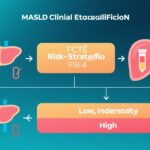Highlights
- Multidose ondansetron after pediatric ED discharge reduces the risk of moderate-to-severe gastroenteritis in children with vomiting.
- The total number of vomiting episodes in the first 48 hours post-discharge is lower with ondansetron versus placebo.
- No significant differences in unscheduled healthcare visits, intravenous fluid use, or adverse events were observed.
Clinical Background and Disease Burden
Acute gastroenteritis remains a leading cause of pediatric morbidity globally, with substantial impact in both outpatient and emergency settings. Vomiting is a distressing symptom, often leading to dehydration, increased healthcare visits, and parental anxiety. Ondansetron, a selective 5-HT3 receptor antagonist, is widely used in the emergency department (ED) to control vomiting and facilitate oral rehydration. While its single-dose efficacy is established, the benefit of continued dosing post-discharge has been uncertain, despite common practice in North America to prescribe ondansetron for home use.
Research Methodology
This multicenter, double-blind, randomized superiority trial was conducted across six Canadian pediatric EDs. Eligible participants were children aged 6 months to less than 18 years presenting with acute gastroenteritis-associated vomiting. After enrollment, caregivers received six doses of oral ondansetron or matching placebo, to be used as needed for persistent vomiting within 48 hours of discharge. The primary outcome was the incidence of moderate-to-severe gastroenteritis, defined by a modified Vesikari scale score ≥9, within 7 days of enrollment. Secondary outcomes included the presence and duration of vomiting, vomiting episode count in the first 48 hours, unscheduled physician visits, intravenous fluid administration, and adverse events.
Key Findings
Of 1030 children randomized, data were available for 893 (452 ondansetron, 441 placebo). Moderate-to-severe gastroenteritis occurred in 5.1% of the ondansetron group versus 12.5% in the placebo group, yielding an absolute risk reduction of 7.4 percentage points (95% CI, −11.2 to −3.7). The adjusted odds ratio (aOR) for moderate-to-severe disease with ondansetron was 0.50 (95% CI, 0.40–0.60), representing a clinically meaningful halving of risk.
While the proportion of children experiencing vomiting and the median duration of vomiting did not differ significantly between groups, the total number of vomiting episodes in the first 48 hours post-enrollment was lower with ondansetron (adjusted rate ratio, 0.76; 95% CI, 0.67–0.87). However, rates of unscheduled healthcare visits and intravenous fluid use during follow-up were similar between groups. Adverse event rates were essentially equivalent (aOR, 0.99; 95% CI, 0.61–1.61), supporting the safety of multidose ondansetron in this context.
| Outcome | Ondansetron (%) | Placebo (%) | Effect Estimate (95% CI) |
|---|---|---|---|
| Moderate-to-severe gastroenteritis | 5.1 | 12.5 | Risk difference: -7.4 (-11.2 to -3.7) |
| Any vomiting (within 7 days) | — | — | No significant difference |
| No. of vomiting episodes (48h) | — | — | Rate ratio: 0.76 (0.67–0.87) |
| Unscheduled healthcare visit | — | — | No significant difference |
| Adverse events | — | — | OR: 0.99 (0.61–1.61) |
Mechanistic Insights
Ondansetron acts by blocking serotonin (5-HT3) receptors in both the central nervous system and the gastrointestinal tract, thereby reducing the emetic response triggered by viral gastroenteritis. Its efficacy in reducing vomiting during acute episodes facilitates oral hydration and may explain the reduction in illness severity observed in this trial.
Controversies and Limitations
Several limitations warrant consideration. The study was conducted in Canadian tertiary pediatric centers, potentially limiting generalizability to settings with differing healthcare infrastructure or patient populations. The protocol allowed ondansetron dosing at caregiver discretion, possibly introducing variability in adherence. The lack of significant impact on subsequent healthcare utilization or intravenous fluid administration suggests that while symptom severity is reduced, resource use may not be. Longer-term safety and effects in very young infants (<6 months) were not assessed.
Conclusion
Multidose ondansetron prescribed at discharge for children with gastroenteritis-associated vomiting significantly reduces the risk of moderate-to-severe illness in the week following an ED visit. Its use does not increase adverse events or unscheduled healthcare utilization, supporting its safety and efficacy as a home antiemetic strategy. Clinicians should weigh these benefits against individual risk factors and local practice patterns. Further research may clarify optimal dosing schedules and identify subgroups with the greatest benefit.
References
1. Freedman SB, Williamson-Urquhart S, Plint AC, et al; Pediatric Emergency Research Canada Innovative Clinical Trials Study Group. Multidose Ondansetron after Emergency Visits in Children with Gastroenteritis. N Engl J Med. 2025 Jul 17;393(3):255-266. doi:10.1056/NEJMoa2503596. PMID: 40673584.
2. Carter B, Fedorowicz Z, Campbell H. Antiemetic treatment for acute gastroenteritis in children: systematic review and meta-analysis. BMJ. 2004;329(7457):1373-1377.
3. Guidelines for the management of acute gastroenteritis in children and adolescents. JAMA. 2018;319(21):2167-2168.



